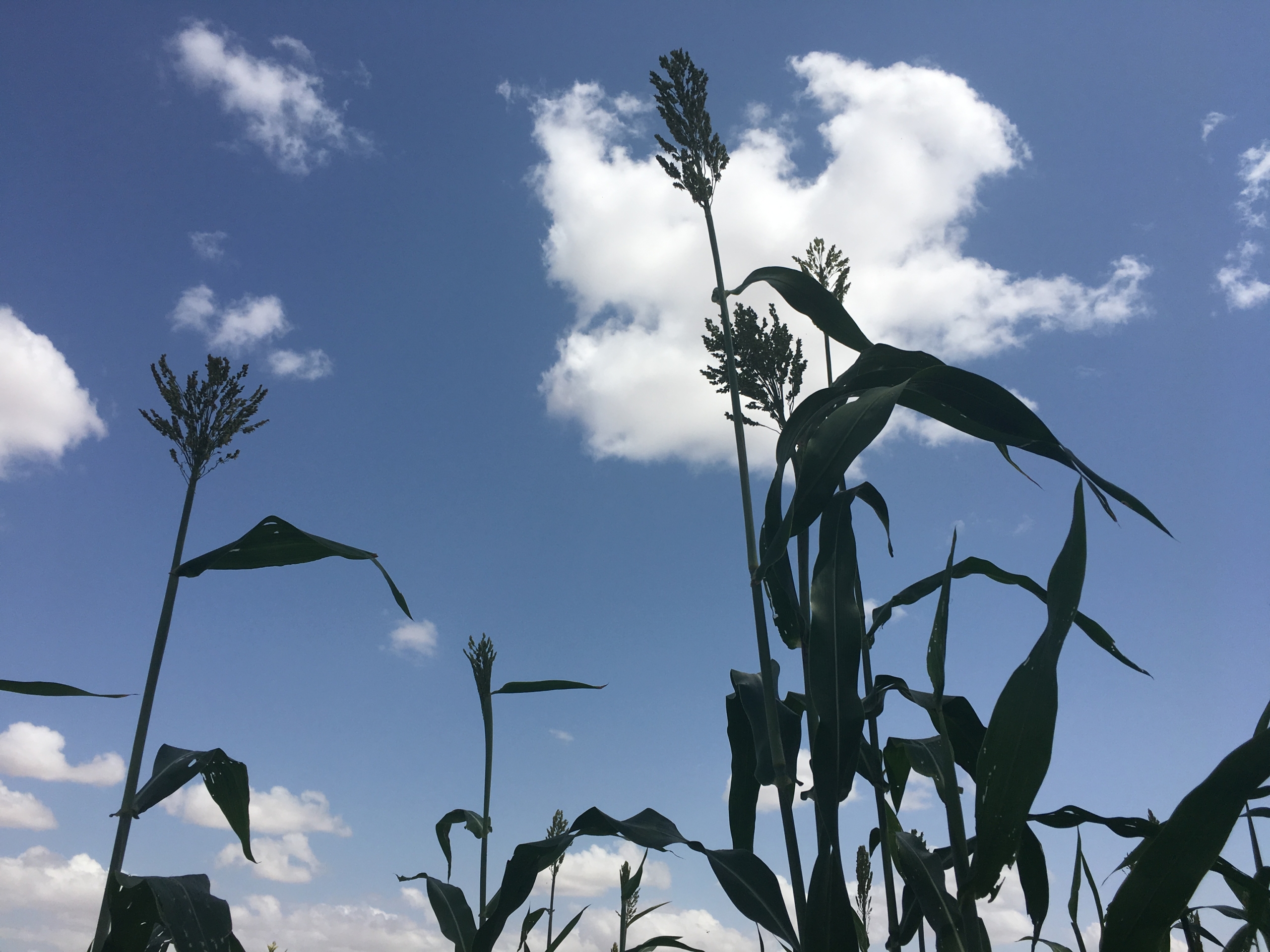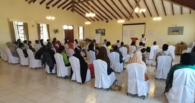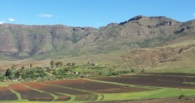Hidden wounds: truth-seeking in Sri Lanka
Fran Girling
28 March 2017
/
- 0 Comments
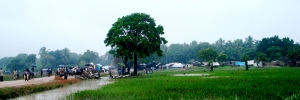
Civilians displaced in the Vanni, January 2009. Photo credit: trokilinochchi
In summer 2016, a Mokoro team travelled to Sri Lanka to undertake a Country Portfolio Evaluation for the World Food Programme (WFP). Participating in the evaluation was a fascinating introduction to the wonderful country and people of Sri Lanka, its diverse history and geography. The Sri Lankan context, as explored in the evaluation report, sums up many of the issues and challenges facing WFP worldwide; a country which has rapidly transitioned from a state of protracted conflict to a ‘middle-income’ economy that is itself emerging as a donor to the agency. For WFP, essential questions as to where and how a food aid agency fits into this new paradigm echo its global strategic shift from ‘food aid’ to ‘food assistance’. Yet, despite signs of positive change in Sri Lanka’s political and economic situation, in particular the ousting of an autocratic president, serious challenges remain, including the impact of climate change, seasonal food insecurity an d unusually high levels of chronic malnutrition. The evaluation findings and recommendations take a forward-looking approach to the strategic challenges faced by WFP in the period 2011-2015, and included a special focus on WFP’s alignment with the Humanitarian Principles. The final evaluation report can be read here.
This article provides a personal perspective on one of the key challenges facing the country: the ongoing, spluttering process of transitional justice which seeks to address the deeply ingrained and painful legacy of 26 years of civil war. This ranges from the tangible: the release of land seized during the conflict and the resettlement of displaced people along with the creation of productive livelihood activities, to the psychological: providing robust avenues and means to confront Sri Lanka’s collective trauma and bring about reconciliation.
The teardrop island
The island of Sri Lanka is roughly half the size of the UK with a population of just under 21 million. The Sinhalese are the country’s largest ethnic group and account for 75% of the population, followed by the Tamil group (11%) which include those originally from the Southern Indian state of Tamil Nadu, brought to Sri Lanka by the British to work on the highland tea estates during colonial rule. Sri Lanka gained independence from the British Empire in 1948 after which tensions between these two groups escalated. Sri Lanka’s current developmental context is heavily shaped by its civil war (1983-2009), a bitter conflict fought along ethno-nationalist lines between the government and the Liberation Tigers of Tamil Eelam, who gained dominance as the leaders of the Tamil resistance movement. The conflict was characterised by a well-equipped and disciplined opposition who led a violent secessionist campaign to create an independent Tamil state in the north and east of the island, after – as they perceived it – a post-colonial history of suppression by the Sinhalese. The origins of the war are multi-dimensional and were complicated further by the length of the conflict itself. Ethnic tensions between the mainly Buddhist Sinhalese and the mainly Hindu Tamils have been aggravated along different lines, including language, education, employment, land and other perceived horizontal inequalities.[1] Under British administration the Tamils flourished with relatively privileged access to education and employment. After independence, several laws passed by Sinhalese-majority governments sought to readjust this power balance, such as laws restricting Tamil language, citizenship and access to higher education which introduced new horizontal inequalities in favour of the Sinhalese.
The prelude to the government’s victory over LTTE forces in the final years of the war was exceptionally bloody and resulted in both sides being accused of committing mass human rights atrocities. Between January and May 2009, government incursions into the Vanni, the mainland of the Northern Province, forced the LTTE and civilians, to retreat further and further toward the North East coast, with the last weeks of fighting taking place on a small spit of beach in Mullaitivi district. During this time the distinction between civilian and rebel became wilfully blurred by both sides and there is evidence of the government shelling frontline hospitals and three consecutive No Fire Zones where civilians had been encouraged to concentrate, as well as the systematic restriction of the supply and distribution of humanitarian aid. LTTE cadres used civilians as hostages, human shields and forcibly conscripted Tamils as soldiers, including children, executing those who attempted to flee. Civilians who escaped the war zone were contained in over-crowded IDP camps and subjected to brutal screenings for LTTE suspects. While there is no authoritative figure of the final death toll, it is estimated that between 60,000 and 130,000 people died in the conflict. The final stages of the war alone resulted in 40,000 deaths[2] and between April 2008 and June 2009 over 280,000 civilians were displaced.[3] Today, the most evident legacy of the war is those who were, and remain, internally displaced by the conflict,[4] 80% of whom were women and children.
The failure of the government and the UN to adequately protect Sri Lankan civilians from such atrocities resulted in opposing responses. For the Sri Lankan state, defeat of the LTTE was paraded as an ultra-nationalistic Sinhalese triumph from which other governments struggling with stubborn insurgency problems could learn.[5] For the UN, the end of the war prompted a period of serious soul-searching. Many argue that the horrors committed in the final few months of the war were only possible because of the silence which surrounded them, in part due to the state-enforced media blackout, but also due to the withdrawal of the UN from rebel territory in September 2008 which enabled the war to come to a close with few witnesses. Testimonies from those civilians trapped in the conflict zone in the final few months speak overwhelmingly of a sense of abandonment from the international community.[6] A subsequent report from an internal review panel commissioned by the UN Secretary-General highlighted the systemic failure of the UN to uphold the Humanitarian Principles[7] and its mandate of protection in the war. It found that the UN ‘did not adequately invoke principles of human rights that are the foundation of the UN but appeared instead to do what was necessary to avoid confrontation with the government.’, and that in particular ‘some agencies and individuals had failed in their mandates to protect people, had under-reported Government violations, and suppressed reporting efforts by their field staff’. The report prompted the Human Rights Up Front initiative, which brought about institutional cultural changes within the UN system to ensure early and effective action in order to prevent large-scale violations of international humanitarian law.
All change, no change
Following the breakdown of the Norwegian-brokered peace deal in 2002[8] the election of the Sinhalese chauvinist Mahindra Rajapaksa as president in 2005 had re-fuelled the viciousness of government military tactics in the final years of the conflict. Rajapaksa’s shock defeat in the 2015 snap election to his former Minister of Health (and serving Defence Minister in the last five weeks of the war), Maithripala Sirisena, marked a change in Sri Lanka’s political trajectory toward a more equal and accountable system of governance, and away from the nepotism, corruption and encroaching authoritarianism which characterised Rajapaksa’s latter days. For the international community, including aid agencies and NGOs, the transfer of power led to an immediate thawing of relations with the government. Previous bilateral-only communication channels were broadened and the atmosphere of mistrust and suspicion, particularly toward Western international agencies, began to fade.
Sirisena now heads up a rickety coalition between Rajapaksa’s former United People’s Freedom Alliance (UPFA) party and the United National Party (UNP). His voter base was made up of disaffected Sri Lankans, particularly Tamil and Muslim minority groups and fringe political parties, who felt alienated by Rajapaksa’s sham reconciliation policies. A key promise of Sirisena’s 100 day reform agenda was constitutional change, to rebalance and devolve the powers of the executive presidency which had grown to dwarf the legislature and judiciary. This was achieved in part through the 19th Amendment which reduces the power of the president in parliament, removes presidential immunity and reintroduces presidential term limits.
However, tensions within the ruling alliance are evident and divergence on key issues is stalling progress and eroding public confidence. The new administration has faced criticism both externally and from the electorate for not implementing quickly enough the reforms promised during the campaign. Part of this is due to economic headaches inherited from Rajapaksa’s regime. Sirisena has also sought to rebalance his predecessor’s foreign policy, particularly with India, which consciously sought to dilute Western influence by increasing investment from countries such as China. Chinese loans are hard to miss in Sri Lanka, from the impressive highways which criss-cross the country, to the giant Colombo City Port project currently under construction, a controversial USD 1.4 billion Chinese contract awarded by Rajapaksa.[9] Other vanity projects from Rajapaksa’s era range from the eerie to the absurd, including the ‘world’s emptiest airport’ – a state-of-the-art, fully-staffed international airport built on a patch of remote jungle in Rajapaksa’s home town of Hambantota; capable of handling over one million passengers a year yet averaging two flights per day – more of a tourist attraction now than anything else. Sri Lankan debt on the Hambantota complex, which also includes a deep-sea harbour and a vast conference centre, is nearly all owed to Chinese banks. Total public debt is at nearly three quarters of GDP. In June 2016, the government turned to the IMF for help with its cash flow problems and a three-year USD 1.5 billion facility was agreed.
In terms of efforts toward post-war reconciliation, Rajapaksa was widely condemned for failing to address the legitimate grievances of Sri Lanka’s Tamils and other minorities by denying that ethnicity was a driving factor behind the civil war. The Lessons Learnt and Reconciliation Commission (LLRC) established at the end of the war was a hollow offering, lacking a real truth-seeking mandate. The election of Sirisena was therefore seen by many as the opportunity to elevate the transitional justice agenda and confront Sri Lanka’s ethnic tensions. Sirisena pledged early on to deal with these inequalities. In October 2015, Sri Lanka co-sponsored the UN Resolution 30/1 ‘Promoting Reconciliation, Accountability and Human Rights in Sri Lanka’ and promised to roll out a suite of transitional justice tools.[10] Sirisena’s commitments are based on four mechanisms: a Commission for Truth, Justice, Reconciliation and Non-recurrence, an Office for Missing Persons (OMP), an Office for Reparations (including the return of civilian land and demilitarisation) and a judicial mechanism with a Special Counsel, which is designed to help the judiciary regain its balance after so many years of political meddling.
However, progress has been slow and constitutional reform has been prioritised over Transitional Justice, much to the dismay of many. The start of 2017 alone has seen hunger strikes and protests in the North towns of Kilinochchi and Mullaitivu around the lack of accountability for those still missing from the war. A comprehensive and well-communicated reconciliation strategy is lacking and the fragmented nature of the ruling coalition has meant divisive issues such as truth-seeking have been deferred for less controversial ones. A recent report from a leading Sri Lankan public policy think tank, the Centre for Policy Alternatives, argues that a failure on the government’s part to restore political momentum with a strategic communication campaign holds both immediate and broader consequences of ‘a government unable to communicate with the public, and the more sinister dimension of all politicians being the same, with the possibility of favouring a more dominant and decisive ruler’. This has been seen in the confusion around the rushed public consultation process and passing of the Office of Missing Persons Act in August 2016. Amnesty International estimates that between 60,000 to 100,000 missing people are still unaccounted for which is one of the main grievances of Tamils today. A Statement from the Consultation Task Force on Reconciliation Mechanisms found that for many, the consultation process was another false hope, and the lack of information communicated to the public ‘reveals a troubling lack of sensitivity’ on the part of the government. The interim report states ‘it is difficult to fully convey the determination, exhaustion and desperation expressed by family members who have attempted to seek redress from multiple actors, including successive commissions’.
Whilst certain legislation has been passed and policies have been drafted, such as to establish the OMP, the Registration of Deaths Act and the Official Languages Policy, little has been operationalised. A strong military presence persists in the north, well infiltrated into civilian life, and surveillance is still used as a tool for intimidation. Despite Sri Lanka ratifying the International Convention against Enforced Disappearances in May 2016, there are still arrests made under the UN-condemned Prevention of Terrorism Act (PTA) which constitutes a de facto state of emergency and facilitates a suspension of fundamental human rights.
In academic debates around transitional justice, there is an increasing realisation of the need to expand the focus beyond political and civil rights to socioeconomic inequalities and systemic marginalisation.[11] In Sri Lanka, the North of the island lags economically behind the rest of the country, with few industrial employment opportunities and many people involved in low-productivity and low-income sectors such as farming, fishing or casual day labour. Growth is centred in the Western province with 29% of the population accounting for nearly half of GDP. War-inflicted poverty remains very much a reality and livelihood interventions in the traditional sectors have failed to draw people out of poverty, with over-indebtedness a particularly widespread concern. War widows remain particularly vulnerable with an estimated 50,000 female-headed households in the Northern Province.[12]
Looking ahead
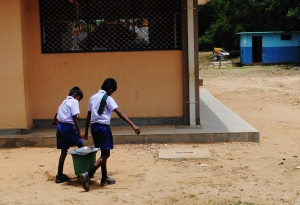
Schoolboys carry WFP-provided school meals to their classroom in Jaffna district. Photo credit: Fran Girling
Despite this, Sri Lanka has made some serious gains in meeting its development objectives over the past few decades. The country has grown wealthier and less dependent on aid; in 2010 the country graduated to lower-middle income status with average growth since the war at 6.4%, and in 2013 net official development assistance dropped to USD 4 million, from USD 1.2 billion in 2005 (World Bank data). Sri Lanka has ambitions to become a regional economic hub, based on its attractive location on the shipping lanes between Singapore and Dubai. Golden sand, palm-tree-fringed beaches, national parks with abundant wildlife and the beguiling colonial whimsy of the up-country tea estates also make Sri Lanka a popular tourist destination, and tourism remains a critical pillar of the economy. For organisations like WFP in Sri Lanka, this rapid shift in operational context has been challenging to keep pace with, from the immense logistical and political challenge of reaching civilians in emergency contexts, to meeting the immediate post-conflict humanitarian need, to Sri Lanka today: a country with a rice deficit that is now itself a donor to WFP.
Sri Lanka was recently due to present an update on the national investigation into war crimes at the 34th UN Human Rights Council (HRC) in March 2017, though it is negotiating an extension. The annual report of the UN High Commissioner for Human rights on Sri Lanka’s progress toward implementing Resolution 30/1 found that whilst ad hoc governmental bodies have been established, they are ‘yet to present a sufficiently convincing or comprehensive transitional justice strategy to overcome the legacy of mistrust and scepticism left by a number of inconclusive ad hoc commissions and procedures’. The report recommends the establishment of hybrid courts, which blend domestic and international legal apparatus, the prohibition of amnesties for war crimes and gross human rights abuses, the restitution of militarized land, the publication of the names of all detainees and detention centres and the repeal of the PTA. It argues that there is a lack of transparency around the various working groups that have been established in terms of their mandate, composition and inter-coordination, particularly in the absence of a comprehensive transitional justice strategy.
Reports have also been presented at the HRC by the UN Special Rapporteur on minority issues and the Special Rapporteur on torture after recent missions to Sri Lanka, which both document a disappointing record of progress. The report from the Special Rapporteur on minorities particularly stresses the need for the government to demonstrate in concrete terms its commitment to its minorities and conflict-affected populations by addressing head-on the long-term psychological impact of the war. It points to the severely damaged social and cultural norms which have physical, emotional and mental-health consequences and calls upon the government to support specific psychosocial programmes for victims. The Report of the Special Rapporteur on torture found that a ‘culture of torture’ persists as part of the legacy of the conflict which denies Sri Lankans the minimum guarantee of protection against the power of the state. ‘White van’ abductions, though less common since the war, are still reported and the report finds credible evidence of the use of police brutality and torture under the PTA.
Festina lente
Foreign Minister Mangala Samaraweera has described Sri Lanka’s approach to post-war reconciliation as festina lente – making haste slowly. There is evidence that this is partly due to the government’s genuine desire to get reconciliation right, and the acceptance that Sri Lanka’s ethnic grievances will not be fixed with a well-worded policy; though equally it is clear that the fractious nature of the coalition is delaying progress. Meanwhile, Rajapaksa’s spectre continues to haunt the political landscape. There is a clear need to manage public perception of government weakness, despite the fact that the more participatory and consensus-driven approach is a welcome break from the past. Reconciliation and the operationalisation of transitional justice institutions need to be fast-tracked if Sirisena’s government is to retain its wide base of support and prove its sincere commitment to resolving Sri Lanka’s ethnic tensions. The state needs to prove that it has the will and the capacity to investigate offences which are linked to security forces. Priority needs to be given to those families whose land is still under military control, to ensure it is returned in a state fit for use, and to restoring a relationship of trust between the state and its civilians. Finally, it needs to be demonstrated to specific communities which face particular marginalisation, such as the estate Tamils, that they have not been forgotten.
Beyond political reform, the economic disempowerment of large segments of people cannot be ignored. As these problems rumble on, there will be roles for agencies such as WFP who are still providing relief and recovery support to displaced and resettled populations, albeit in the face of waning donor interest, and are diversifying into technical support to nutrition commodities and behaviour change programmes, as well as climate change and disaster risk reduction. Climate challenges are particularly worrying and even now Sri Lanka is experiencing one of its worst droughts since the 1970s, with erratic, but low, rainfall in 2016 resulting in the failure of the main harvest. These shocks pose a serious threat to the food and nutrition security of Sri Lanka’s population and with rising food prices a recent WFP report found that over one third of the population are unable to afford the minimum cost of a nutritious diet.
The election in January 2015 granted Sri Lanka’s justice-seeking, democratic movement a crucial opportunity to reverse an authoritarian trend. There is an urgent need to re-energise the reform project and for the government to communicate to Sri Lankan people its genuine commitment to reconciliation, equitable economic growth and devolution of power to minority groups. More haste, more speed. Until then, WFP continues to develop its role within the context it finds itself, the ever-visible infrastructure and signage of international agencies and NGOs acting as a reminder of where only so recently Sri Lanka has come from.
Referenced literature and further reading:
A Way Forward. An informed society with sustainable capacity for good governance and development. IRDG (Institute of Regional Development and Governance of the North-East of Sri Lanka), N.D.
Annual report of the United Nations High Commissioner for Human Rights and reports of the Office of the High Commissioner and the Secretary-General: Report of the Office of the United Nations High Commissioner for Human Rights on Sri Lanka. Human Rights Council 34th Session, 27 February-24 March 2017, Agenda item 2. Advance Edited Version, 10 February 2017.
Caught in the peace trap? J. Goodhand, and B. Korf in ‘Conflict and peace building in Sri Lanka’. Edited by J. Goodhand, J. Spencer and B. Korf, Routledge Contemporary South Asia Series, 2011.
Compromise or Capitulation: Report on WFP and the Humanitarian Crisis in Sri Lanka. D. Keen, 2009.
Effects of Invisibility: In Search of the ‘Economic’ in Transitional Justice. Z. Miller, The International Journal of Transitional Justice, Vol 2, 2008: 266-291.
Horizontal Inequalities: A neglected dimension of development. F. Stewart, Working paper No. 81, QEH Working Paper Series, February 2002.
Human Rights up Front. An Overview. OCHA, 24 July 2015.
Reconciliation through the Devolution of Powers in Post-War Sri Lanka: A special reference to the debates on 13th Amendment of the constitution. S. M. Aliff, Asian Journal of Research in Social Sciences and Humanities Vol. 5, No. 6, June 2015: 62-84.
Report of the Secretary-General’s Internal Review Panel on United Nations Action in Sri Lanka. UNSG, November 2012.
Sri Lanka Gender Assessment, an update. AsDB, 2015
Still Counting the Dead: Survivors of Sri Lanka’s Hidden War. Frances Harrison, Portobello Books, October 2002.
The Long Shadow of War: the Struggle for Justice in Postwar Sri Lanka. The Oakland Institute, 2015.
Transitional justice: Topic guide. H. Haider, GSDRC, University of Birmingham, 2016.
Two Years in Government: A review of the pledges made in 2015 through the lens of constitutional reform, governance and transitional justice. B. Fonseka, L. Ganeshathasan and S. Daniel. Centre for Policy Alternatives, February 2017.
[1] Term coined by Frances Stewart (2002), defined as inequalities between culturally formed groups
[2] https://www.securitycouncilreport.org/atf/cf/%7B65BFCF9B-6D27-4E9C-8CD3-CF6E4FF96FF9%7D/POC%20Rep%20on%20Account%20in%20Sri%20Lanka.pdf (p.41)
[3] http://www.internal-displacement.org/south-and-south-east-asia/sri-lanka/2014/almost-five-years-of-peace-but-tens-of-thousands-of-war-displaced-still-without-solution
[4] Displacement as a result of conflict, which fluctuated throughout the war, was compounded by the devastating 2004 tsunami which forced over a million Sri Lankans from their homes.
[5] See http://www.economist.com/node/16167758 and http://www.reuters.com/article/us-nigeria-sri-lanka-idUSKBN0EO11B20140613
[6] Frances Harrison’s book ‘Still Counting the Dead’ provides a brutal depiction of the final few months of the war from the perspective of the Tamils caught in the fighting, who on average were forcibly displaced 20 times. This issue of the failure of the UN system is particularly focused on in Chapter One entitled ‘The War the United Nations lost’.
[7] https://www.wfp.org/sites/default/files/Humanitarian%20Principles.pdf
[8] Many in Sri Lanka criticised the ‘peace trap’ of the 2002 ceasefire which pandered to a Western brand of top-down, liberal peacebuilding and was seen to violate state sovereignty and bias engagement with government forces over the LTTE (J. Goodhand & B. Korf, 2011)
[9] This has foreign policy complications in terms of Sri Lanka’s relationship with India, who dislike the cosiness fostered with China under Rajapaksa’s rule.
[10] Transitional Justice emerged as a concept in the 1980s in Latin America and in Europe in the 1990s after the fall of the Soviet Union. The instruments of Transitional Justice are mechanisms which help states make the leap from one regime to another. Mechanisms include: memorialisation, truth commissions, trials and criminal prosecutions and institutional reform. Miller (2008:267) understands Transitional Justice as a ‘definitional project’: ‘explaining who has been silenced by delineating who may now speak, describing past violence by deciding what and who will be punished and radically differentiating a new regime in relation to what actions were taken by its predecessor.’
[11] See Miller (2008) and Haider (2016)
[12] http://www.irinnews.org/feature/2015/05/13/help-last-sri-lanka-war-widows
You must be logged in to post a comment.

